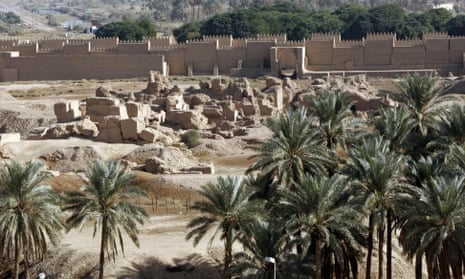A handful of date seeds from fruit that ripened around the time of Jesus have been successfully planted and grown in southern Israel, researchers have revealed.
The seeds, dubbed Adam, Jonah, Uriel, Boaz, Judith and Hannah, were among many others discovered at archaeological sites in the Judean desert.
It is not the first time the team have managed to grow ancient seeds: in 2008 they reported that they had germinated a 1,900-year-old Judean date palm seed from Masada – an ancient site extended by Herod the Great in the first century BC that looks out over the Dead Sea. That plant, a male, was named Methuselah after the oldest character in the Bible.
But the new study goes further – not only involving more seeds, but shedding light on the way Judean farmers may have cultivated the famous plants.
And with the newly germinated seeds including females, the discovery could bear further fruit: the team say they hope to apply Methuselah’s pollen to Hannah – which is expected to produce a flower within the next two years – with the goal of producing dates.
But it may not quite be a resurrection.
“It won’t be the typical Judean date, because dates that were grown at that time – just like dates that are grown today – are not grown from seeds that somebody puts in the earth,” said Dr Sarah Sallon, director of the Louis Borick Natural Medicine Research Centre at the Hadassah Medical Organization in Jerusalem. “They are grown from clones from very high-producing females.”
Date palms are thought to have first been cultivated in Arabia and Mesopotamia (now Iraq) more than 6,000 years ago and were once widespread in ancient Judea, a region of the Levant. As well as being an important item of food, said Sallon, they were used to treat various medical conditions, including depression and poor memory. “Dates were an enormous export from Judea and they were famous,” she said.
Writers from Pliny the Elder to Herodotus raved about the qualities of Judean dates, including their long shelf-life, which allowed them to be transported far and wide. “Herod even used to present them to the emperor in Rome every year,” said Sallon.
But the plants suffered under centuries of unrest; by the 19th century the plantations had disappeared.
Writing in the journal Science Advances, Sallon and colleagues report how they planted 32 Judean date palm seeds retrieved from a variety of archaeological sites across the Judean desert. These include Masada and caves at Qumran – shelters best known for concealing the Dead Sea scrolls but which were also used by refugees in ancient times.
“I spent hours and hours in the archaeology department picking through the best seeds,” said Sallon. “A lot of them had holes in where insects had bored through or [they had] fallen apart, but some were really pristine and I picked the very best ones.”
Six of the seeds sprouted. The team radiocarbon-dated fragments of the shells left after germination to reveal that Hannah and Adam date to somewhere between the first and fourth centuries BC. Judith and Boaz were dated to a 200-year period from the mid-second century BC, and Uriel and Jonah were dated to somewhere between the first and second centuries AD.
“I’m Jewish, so I gave them Jewish names,” said Sallon, adding that, before the sex of the plants was known from genetic analysis, Adam was named Eve.
While some seeds took just weeks to sprout, others took half a year. “We were beginning to despair and then suddenly they came up,” she said.
The team found that ancient date seeds are larger than those of both modern cultivated date palms and wild plants. “Today’s seeds are still about 30% smaller than what they grew in Judea 2,000 years ago,” said Sallon.
Genetic analysis revealed that the older the ancient seeds were, the more “eastern” their genetic makeup appeared to be: Adam and Methuselah are closest to present-day varieties from the Gulf.
That, said Sallon, may reflect the type of trees that naturally grew in Judea at the time, or they may have been brought up the Red Sea from Arabia – an ancient trading route.Hannah and Judith are closer to modern Iraqi varieties – something Sallon said may be linked to the return of Jews from exile in Babylon in the late sixth century BC, many of whom had worked on Babylonian date plantations and may have brought plants back with them.
Meanwhile, Uriel, Boaz and Jonah had a high genetic contribution from varieties west of Egypt and were most genetically similar to modern varieties from Morocco. “The Roman occupation [of Judea] was from the first century and it is possible that at that time they were bringing date varieties in from north Africa,” said Sallon.
